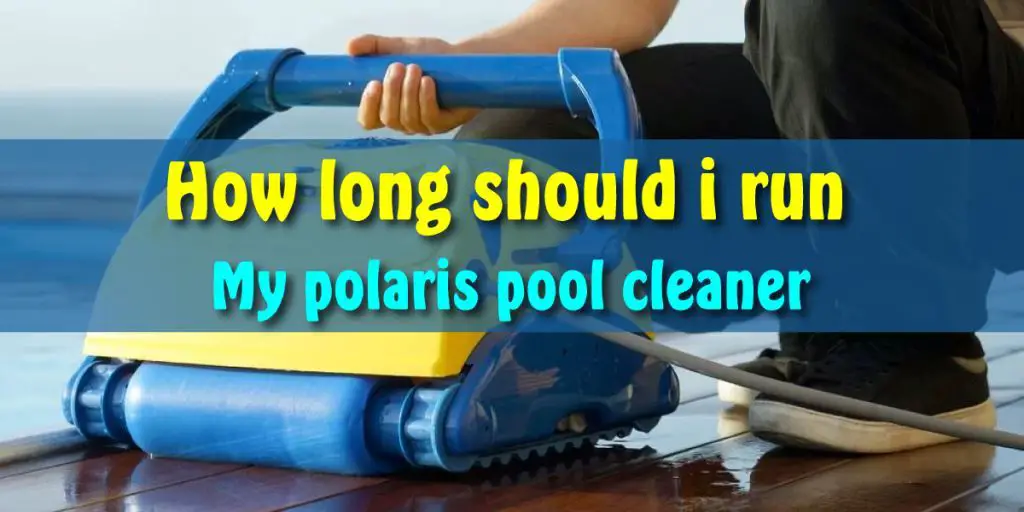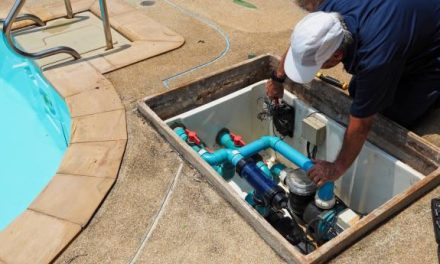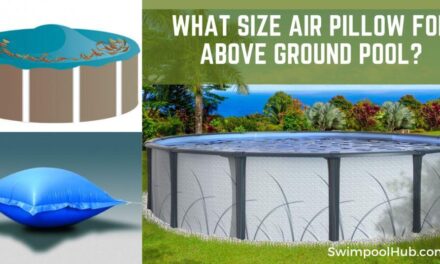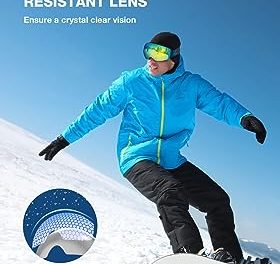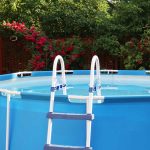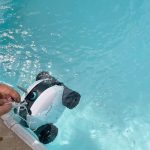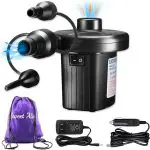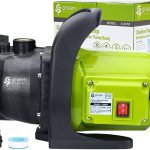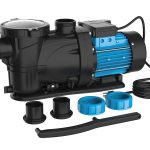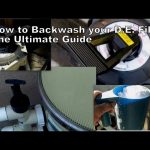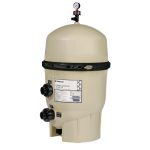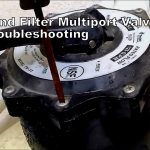If you want to know about the industry what is the best industry leader pool cleaner and cleaning technology? And have an excellent reputation for their attentive customer service and quality products. The answer is the Polaris pool cleaner. This automatic pool cleaner can save you a lot of time and hassle in cleaning your pool. Polaris is a pressure pool cleaner, so you need to know how long to run polaris pool cleaner before using it.
Before going in-depth, you should know about how it works after being filtered the side of your process is where clean water is pumped back into your pool. The suction side is the opposite side, where through your pool filter water is pulled into the skimmer. Polaris machine hooked up to hose attached with a water return jet. Through water pressure around the surface of your pool, it drives the floating center. To collect larger dust, a skimmer bag is fixed at the end of the jet. For power and efficiency, Polaris has a booster pump.
You can drain water out so quickly with this Polaris robotic pool cleaner with its easy lift system. If you see the canister is full, then shake the debris out and pull it out. It comes with a convenient transport caddy and works on any surface.
Many people think or feel that suction-side pumps or pressure-side pumps last longer. Yes, an ideal pressure side cleaner can last long for more than 8 years; on the other hand, a robotic pool cleaner can last up to 3/5 years. One disadvantage of a robotic pool cleaner is that it has no replacement parts, and on the other hand, pressure-side cleaners have replacement parts available.
How Long to Run Polaris Pool Cleaner?
Polaris pool cleaners can stay in the pool for 24 hours and 7 days. You can run it as long as it keeps the pool clean. It depends on the amount of debris in the pool. On average, it takes about 3 hours to clean a normal size pool. But it is ideal for running it for 2-3 hours per day depending on leaf count. Here you’ve got your answer that how often to run Polaris pool cleaner.
Here is one thing you have to remember if your pool cleaner does not use a booster pump, it will always run for the same length of time, and there is no way to adjust the everyday run time. Another thing you have to remember is that the more you run it, the more wear and tear on it, and it’s going to wear out faster, or should we say you are going to be replacing parts more often.
You can clean your pool manually, but investing in an automatic or robotic pool vacuum cleaner can save you lots of precious time and work. So what are you waiting for? Just go and buy a robotic pool cleaner, and spend more time swimming, and less time cleaning!
How to maintain an inground pool? – A Step-by-Step Guide:
Properly maintaining an inground pool is essential for keeping the water clean, safe, and enjoyable for swimming. With a few simple steps, you can ensure that your swimming pool stays in top condition all year round. Here’s a step-by-step guide to help you get started.
1. Test Your Pool Water Regularly:
Testing your pool water regularly will help identify issues before they become bigger problems and require more intensive cleaning or repairs. Make sure to test the pH level at least once a week as well as other parameters such as calcium hardness, total alkalinity, cyanuric acid levels, and stabilizer levels. Take a sample of your pool water to a pool store for testing and adjust the chemical balance as necessary.
2. Clean Your Pool Regularly:
It is important to clean your pool on a regular basis in order to maintain clear, healthy water and extend the life of your swimming pool. As part of routine maintenance, you should use a skimmer net or vacuum cleaner to remove debris from the surface of the pool and filter out larger particles like leaves, twigs, bugs and other items that can end up in your pool. You should also brush down any walls or steps in your inground pool at least once a week with an appropriate cleaning solution.
3. Balance Your Pool’s Chemistry:
Keeping your pool’s water chemistry balanced is essential for preserving and protecting the life of your swimming pool. This includes making sure that the pH level, chlorine, alkalinity, calcium hardness and stabilizer levels are all in check. If you don’t feel comfortable performing this task yourself, consider hiring a professional pool service to do it for you.
4. Inspect Your Pool System:
Insufficient filtration can cause problems with your inground pool like cloudy water or algae growth. To make sure that your system is functioning properly, regularly inspect the filter and pump systems as well as any other components such as skimmers and drains. Check these items at least once per month or whenever there is a change in weather conditions to ensure that everything is working as it should.
5. Maintain Your Pool’s Surroundings:
A well-maintained pool area not only looks nicer but can also help to keep your swimming pool cleaner for longer periods of time. Keep trees and shrubs trimmed away from the pool deck and regularly sweep up any leaves or debris so that they don’t end up in the water. You should also make sure to empty out any containers, like buckets or toys, when they are not being used.
By following these steps, you can easily maintain an inground pool and keep it looking great all year round. With regular testing, cleaning, and chemical balancing of the water as well as maintenance of its surroundings, you can ensure that your pool is always in top condition for swimming.
FAQ’s
1. What are the benefits of using a Polaris pool cleaner?
A Polaris pool cleaner provides many benefits, including:
- Quick and easy cleaning – your pool will be clean in no time!
- Increased circulation and water movement help keep your pool healthy and looking great.
- Automatic operation so you can relax and enjoy your time in the pool.
- A Polaris Pool Cleaner can clean all types of surfaces, including vinyl, fiberglass, and tile. With our easy-to-use models, you’ll also be able to maintain an even cleaning pattern with no worries!
2. What are some common features?
Polaris has a wide range of different models to choose from, and each model offers different features. For example:
- The most popular model the Polaris Vac-Sweep 360 has a patented design that sweeps all types of debris into its large filter bag while still allowing water to pass through easily – making it perfect for any pool surface! It also comes with an extra-long cord so you can easily clean the entire pool.
- The Polaris 280 is designed for smaller pools and has a built-in filter bag to make debris collection easy. It also offers an automatic shut-off system so you can relax while it cleans!
3. What are some common myths about Polaris pool cleaners?
There are a few myths floating around about Polaris pool cleaners – let’s set the record straight!
1. Myth: Polaris pool cleaners are only for in-ground pools.
Fact: Polaris offers a wide range of cleaners that can clean all types of pools, both in and out of the ground!
2. Myth: Polaris pool cleaners are difficult to operate.
Fact: All of our models are easy to use – you simply plug it in, drop it into the pool and let it do all of the work!
3. Myth: Polaris cleaners are expensive.
Fact: These models range from being very affordable to high-end depending on your needs – we have a model for any budget!
4. How much does a Polaris cleaner cost?
Polaris pool cleaners range in price depending on which model you choose. You can find a great pool cleaner on any budget!
Final Verdict
You should typically run the Polaris for at least 1 hour to get a good clean. If you are short on time, make sure to check out our article about how long to run polaris pool cleaner. The best way to ensure that your Polaris is operating as efficiently as possible is if it runs for an extended period of time. We recommend running the Polaris for at least one hour before turning it off or moving on to another task in order to thoroughly remove any debris from the pool’s surface and filter system. Shortening this amount can leave dirt particles behind which will be re-circulated back into the water when you turn back on your pump later that day. If you have less than 45 minutes available, reduce power by half

